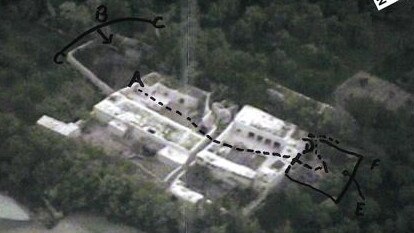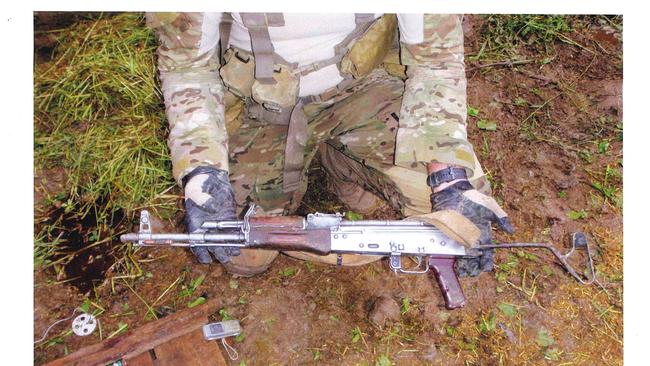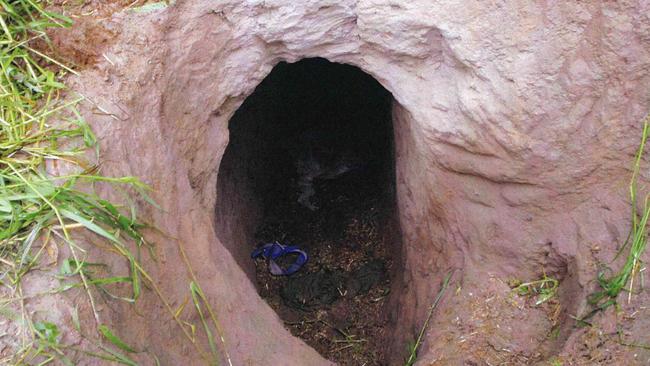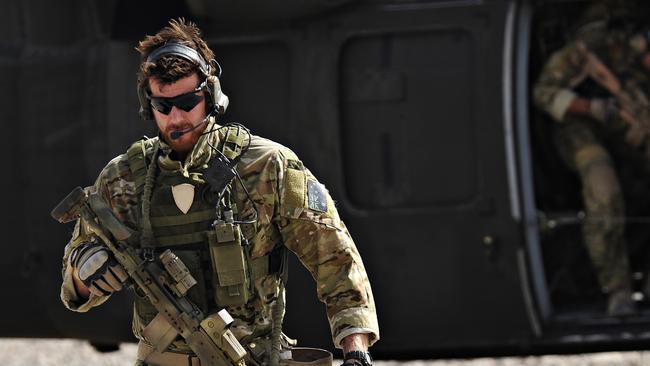Ben Roberts-Smith’s defamation case could be decided by scribble
Harrowing war stories have dominated headlines in the Ben Roberts-Smith defamation case but drawings on old photographs could decide major parts of the case, new evidence has revealed.
Police & Courts
Don't miss out on the headlines from Police & Courts. Followed categories will be added to My News.
For weeks, Ben Roberts-Smith’s allies have shared complex and brutal testimony about war crime allegations and SAS factionalism – but now it’s been revealed a key allegation could turn on a sharpie squiggle on a grainy old photograph.
Mr Roberts-Smith is suing Nine newspapers over allegations he killed six unarmed Afghans while deployed with the SAS.
He totally denies those claims while Nine insists they are true.
The allegations have split the elite fighting force with SAS soldiers testifying both for and against Mr Roberts-Smith in the Federal Court.
Many have cried in the stand or clashed with lawyers questioning them about the horrors of war – and those moments have typically dominated the headlines.

But between those moments there are slower, painstaking times as the same soldiers mark up old photographs and maps of those conflicts to show their movements.
It’s only this week that one set of such markings, made on a blurry photograph taken more than a decade ago, has emerged as a potential lifeline for both Nine and Mr Roberts-Smith.
Nine claims that the SAS, at a Taliban compound known as Whiskey 108, found and detained two Afghans hiding in a subterranean tunnel.
Nine further claims Mr Roberts-Smith killed one of the prisoners with a machine gun just outside the compound walls and watched while the second Afghan was executed just metres from his hiding spot by a rookie soldier.
Mr Roberts-Smith vehemently denies that anyone was found in the tunnel or executed at that 2009 raid.
He insists he shot and killed one of the Afghans, who was armed, in a legitimate and lawful engagement.

In June last year the Victoria Cross recipient marked up a low resolution surveillance photograph of Whiskey 108 – the last image taken of the Taliban base before a 500 pound US bomb levelled it.
Whiskey 108 was a compound that comprised rooms, courtyards, animal pens, cooking quarters, storage areas and clearings cut into the “green belt” vegetation on a riverbank.
Mr Roberts-Smith was asked to draw an arc and label it “C” to show where a five-man SAS patrol, led by an Australian commander known as Person 6, had fanned out.
Person 6’s patrol were providing a “cordon”, or a guarded perimeter, while the other SAS soldiers stormed into Whiskey 108.
If Person 6’s patrol were, in fact, standing where Mr Roberts-Smith had drawn the arc then they would have no chance of seeing over the walls, rooms and courtyards of Whiskey 108.
Crucially, those soldiers would have been on the total opposite side of Whiskey 108 as the tunnel and far from the alleged execution sites.
One of Person 6’s soldiers, Person 14, told a different story.

He told the court, in his evidence this year, that his patrol was moving along the north wall of Whiskey 108 into a clearing.
While moving toward the north of the compound, Person 14 said, he shot and killed an insurgent.
While still close to the north of Whiskey 108, Person 14 said, he saw an Australian soldier march a dark figure outside and throw it to the ground.
Person 14 claims the Australian soldier then unleashed a burst of machine gun fire into the man who was laying in the dirt – Nine alleges that was Mr Roberts-Smith carrying out an execution.
“He‘s laying on his back. He had a shaved head, a little bit of a beard and dark Afghan robes. He had, which was illuminated, a white leg which ended up being a prosthetic leg,” Person 14 said.
But this week another soldier, Person 29, appeared to paint a similar picture as Mr Roberts-Smith suggesting Person 6’s patrol were guarding an entrance far from the tunnel site.

The importance of the patrol‘s position was illustrated when Nine’s barrister, Nicholas Owens SC, asked Person 29 if he was trying to put Mr Roberts-Smith’s accusers out of sight.
“It’s right, isn’t it, that you and Mr Roberts-Smith decided together you had to say something that would mean P14 couldn’t have seen (the alleged execution)?” Mr Owens asked.
‘That’s not correct,” Person 29 said.
Person 29 said he saw Person 6’s patrol at the cordon at the southern end of Whiskey 108, not the north, Mr Owens said it was “false”.
The SAS soldier agreed that Person 14 must have moved locations to kill the other insurgent, but said he did not know where Person 14 was at the time.
Person 29, who discovered the tunnel, also told the court there was no one inside the hidden chamber at any rate.

The diminutive soldier he sent into the crevice, Person 35, has also told the court there was no one inside.
Both men are considered loyal friends to Mr Roberts-Smith.
Other SAS soldiers have told the court they recalled the Afghans emerging from the tunnel.
Justice Anthony Besanko will likely have to weigh up which soldiers are telling the truth when it comes to deciding the case.
That could mean deciding where Person 6’s patrol was standing, whether Person 14 was able to see the alleged execution site and whether there was anyone in the tunnel at all.
The trial continues.




